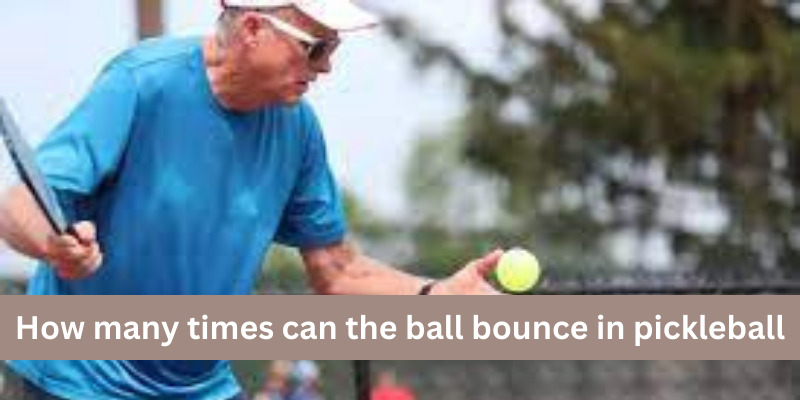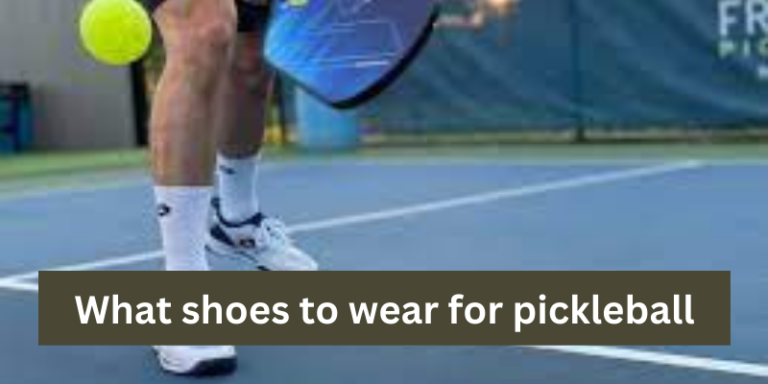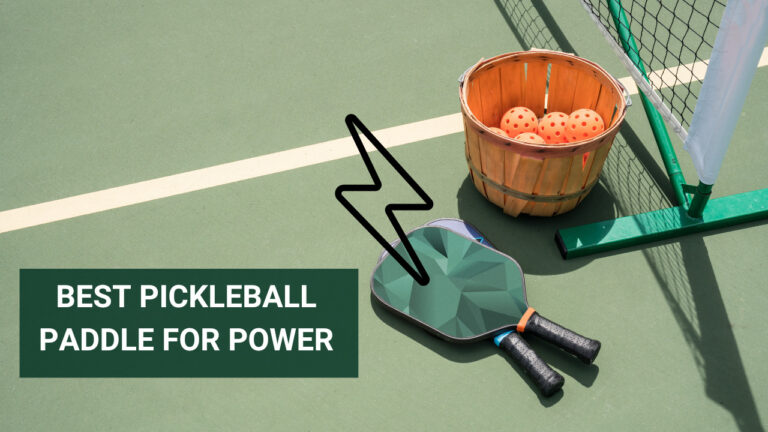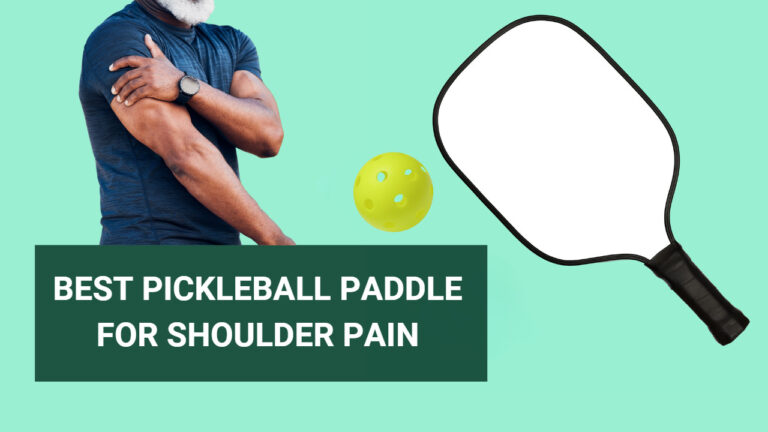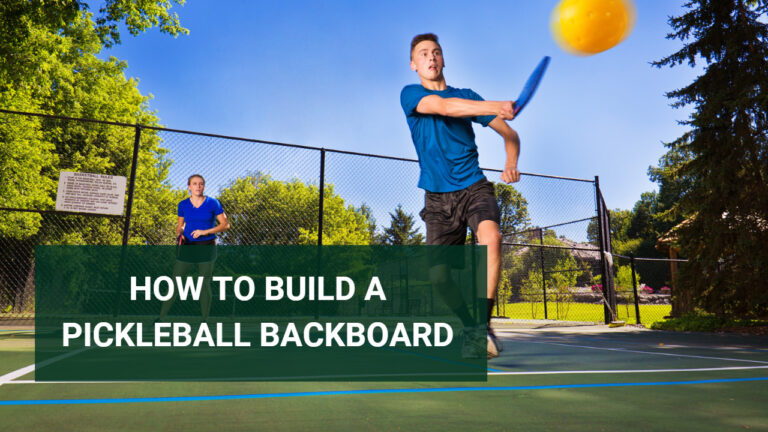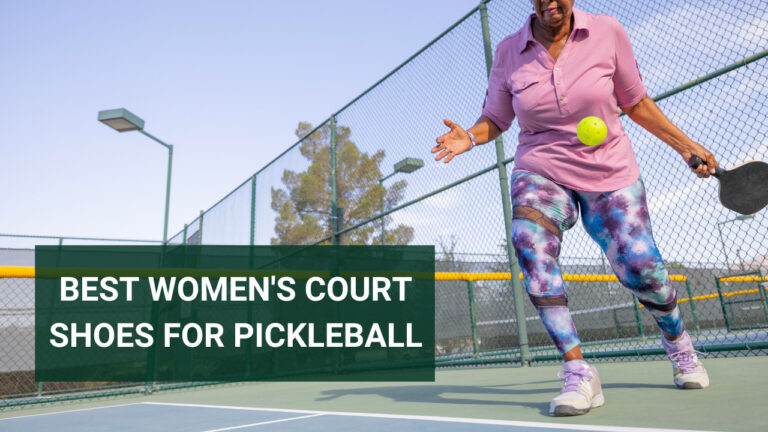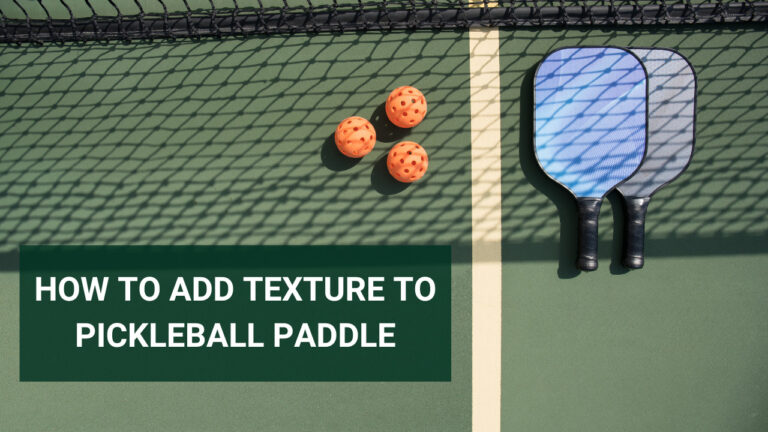How many times can the ball bounce in pickleball – Bounce Count Mystery
One bounce, two teams, endless fun! Discover the ball-bouncing thrill of pickleball. Are you new to pickleball and wondering how often the ball can bounce before it’s out of play?
When playing pickleball, players aim to keep the ball in play by allowing it to bounce once on their side before returning it to their opponents.
Over the course of this post, we aim to explore how many times can the ball bounce in pickleball and why this rule exists. Plus, we’ll provide some tips for playing this exciting game! So grab your paddle, and let’s dive into the world of pickleball.
How many times can the ball bounce in pickleball – Guide
The ball can only bounce twice in pickleball before it’s considered out of play. This rule is often called the two-bounce rule, and it applies to both singles and doubles matches.
When serving in pickleball, the ball must be hit underhand and make contact with the paddle below waist level.
After a successful serve, players continue to volley back and forth until one side fails to return the ball within two bounces.
It’s important for players to keep track of how many times the ball has bounced during each rally. If you’re unsure whether a shot will result in a second bounce or not, it’s better to play it safe and return it anyway.
The two-bounce rule adds an element of strategy to pickleball. Players must anticipate where their opponents will hit the ball in order to position themselves for optimal returns.
It also helps keep rallies moving quickly, making for an exciting game that requires quick reflexes and precise shots.
Understanding how many times the ball can bounce in pickleball is essential for any player who wants to succeed on the court!
The two-bounce rule in pickleball.
Pickleball is a sport that has become increasingly popular in recent years, and it’s essential to know the basic rules before diving into the game. One of the most crucial regulations in pickleball is the two-bounce rule.
According to this rule, once a player serves, their opponent must let the ball bounce once before returning it. After that initial bounce, both players can hit the ball without waiting for it to touch the ground again.
However, if at any point during gameplay, either team fails to return a ball after two bounces or hits it out of bounds on purpose or by accident – they lose a point.
The two-bounce rule helps level out playing fields between experienced and novice players since beginners may need extra time to prepare for shots.
In contrast, intermediate and advanced players will have an easier time anticipating where their opponents’ returns are going next.
Although this regulation may seem challenging for newcomers initially, when you get used to it – It becomes second nature quickly. Following The Two-Bounce Rule improves fairness among competitors while also giving every player an equal opportunity to make successful plays!
Basic Rules of Pickleball
Pickleball is a fun and exciting game that combines elements of tennis, badminton, and ping pong. It can be played indoors or outdoors on a court similar to a doubles badminton court. Before playing the game, it’s important to understand some of the basic rules.
One of the most important rules in pickleball is the serve. The server must stand behind the baseline and hit the ball underhand with their paddle aimed below their waist level.
The serve must clear the net and land within the opponent’s service court.
Once the ball has been served successfully, players take turns hitting back-and-forth until one player fails to return it or hits it out-of-bounds. A point is awarded for each successful rally won by either side.
Another key rule in pickleball is called “double bounce.” This means that once each team has hit one shot (serve included), both teams must allow for at least one bounce before returning shots off of volleys.
There are also specific rules regarding faults such as stepping into or on any part of an adjacent:
- non-volley zone line while volleying
- hitting a ball out-of-bounds
- touching any part of a non-volley zone during play
- failing to execute proper serving technique
- striking two bounces before returning your opponents’ shot etc…
By following these basic rules and practicing your skills consistently, you’ll quickly master this enjoyable sport!
Bouncing the Ball
Bouncing the ball is a key aspect of playing pickleball, as it determines whether or not a point can be won. In pickleball, the ball must bounce once on each side of the court before players can start volleying back and forth.
When serving in pickleball, players must hit the ball underhand and make sure it lands within the opposite service court.
Once the serve has been made, both players must wait until the ball bounces once on their respective sides before they can start hitting it back to each other.
During rallies, if a player hits the ball over to their opponent’s side without first bouncing it on their own side, then they lose that point.
Similarly, if a player fails to hit an incoming shot after two bounces have occurred (one on each side), they also lose that point.
Mastering how to properly bounce and return shots in pickleball takes practice and skill. Players who are able to consistently execute this technique will find themselves at an advantage during matches.
Why Does the Two-Bounce Rule Exist?
The two-bounce rule is one of the most fundamental rules in pickleball, and understanding why it exists can help players improve their game. Simply put, the two-bounce rule states that a player must allow the ball to bounce twice on their side before they hit it back over the net.
But why does this rule exist? One reason is to make sure rallies are longer and more exciting. Without this rule, skilled players could potentially dominate games by hitting hard shots that opponents couldn’t return.
By requiring at least one bounce on each side of the court, players have more time to react and strategize.
Another reason for the two-bounce rule is to promote fairness in gameplay.
If a player hits a shot that barely clears the net but lands just out of reach of their opponent, it wouldn’t be fair if they were able to win the point outright without giving their opponent a chance to return it.
While some may view it as a hindrance or restriction on play style, we can agree that it ultimately leads towards better matches with longer rallies and increased fairness between both teams.
Tips for Playing Pickleball
When it comes to playing pickleball, a few tips can help you improve your game and have more fun on the court.
- First and foremost, ensure you’re using the right equipment, a comfortable paddle in your hand and sized correctly for you.
- Secondly, focus on getting into position before hitting the ball. This means being ready with your feet set shoulder-width apart, knees slightly bent, and weight evenly distributed before each shot.
- Another tip is to pay attention to your opponent’s positioning on the court. If they’re standing close to one side of their half of the court, try hitting the ball towards the opposite side.
- This will force them to move quickly across the court and give you an advantage.
- Don’t be afraid to mix up your shots, either! Try adding some spin or changing up the speed of your hits to keep your opponent guessing.
- Communication is key in doubles play – make sure you’re calling out who’s taking which shot so there aren’t any collisions or missed opportunities.
By following these tips, you’ll be well on your way to becoming a better pickleball player!
Conclusion
The two-bounce rule in pickleball allows for a fair and fun game for players of all levels. The rule ensures that both teams have an equal opportunity to return the ball and keeps the game’s pace moving quickly. Remember to always bounce the ball before hitting it and avoid touching it after it has bounced twice.
Following these basic rules and tips for playing pickleball, anyone can enjoy this exciting sport with friends or in organized leagues. So grab your paddle, find a court, and start bouncing!
FAQs:
Does a ball bounce infinitely?
No, a ball does not bounce infinitely.
How many times can you touch the ball?
In pickleball, you are allowed to touch the ball once before returning it to your opponent.
Does a ball ever stop bouncing?
Yes, a ball eventually stops bouncing due to factors like gravity, air resistance, and loss of energy through collisions with the surface it bounces on.
What is the theory of bounce ball?
It involves concepts such as elasticity, impact, and conservation of energy to explain the behavior of a ball when it hits a surface and rebounds.
What is the law of bouncing balls?
The law of bouncing balls states that the angle of incidence (incoming angle) is equal to the angle of reflection (outgoing angle) when a ball bounces off a surface. This principle is based on the conservation of energy and momentum during the collision between the ball and the surface.
How do you calculate ball bounce?
To calculate the bounce of a ball, you can consider factors such as the initial velocity, angle of impact, elasticity of the ball and surface, and the effects of gravity.
Who invented bounce?
It is not possible to attribute the invention of bouncing to a single individual, as the concept of objects rebounding off surfaces has been observed and understood since ancient times. Bouncing is a natural phenomenon that has been observed and utilized by humans for various purposes throughout history.
